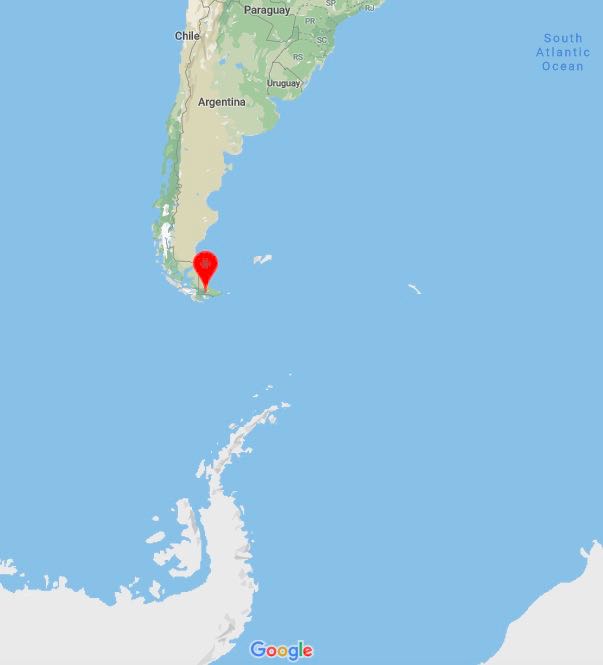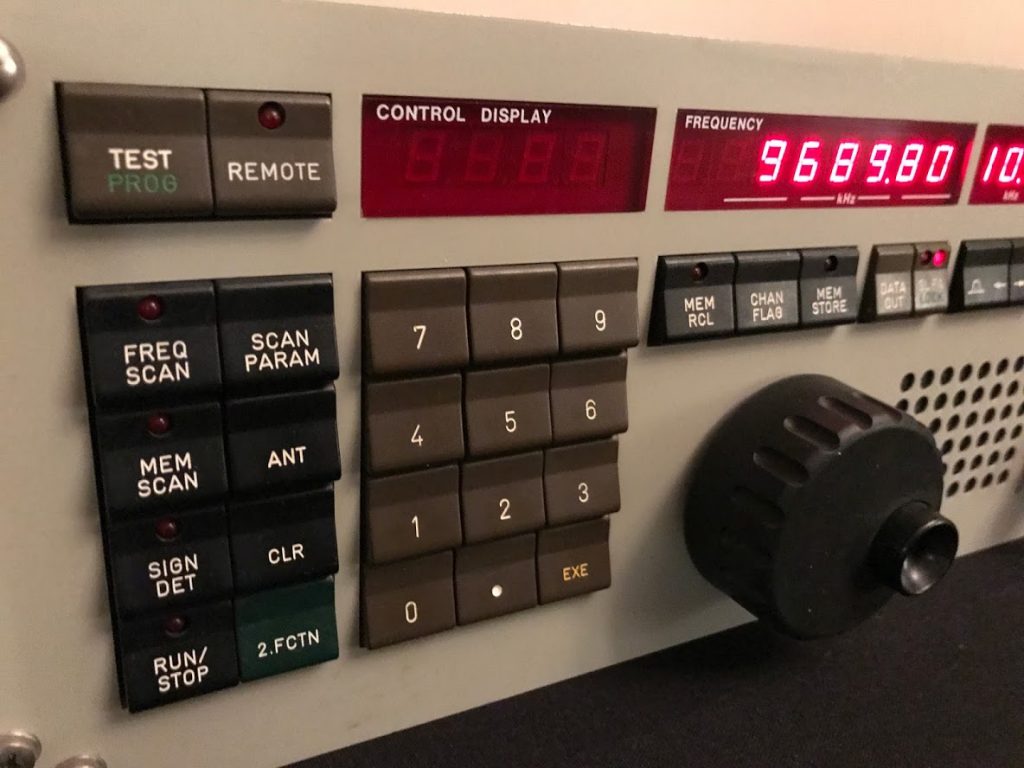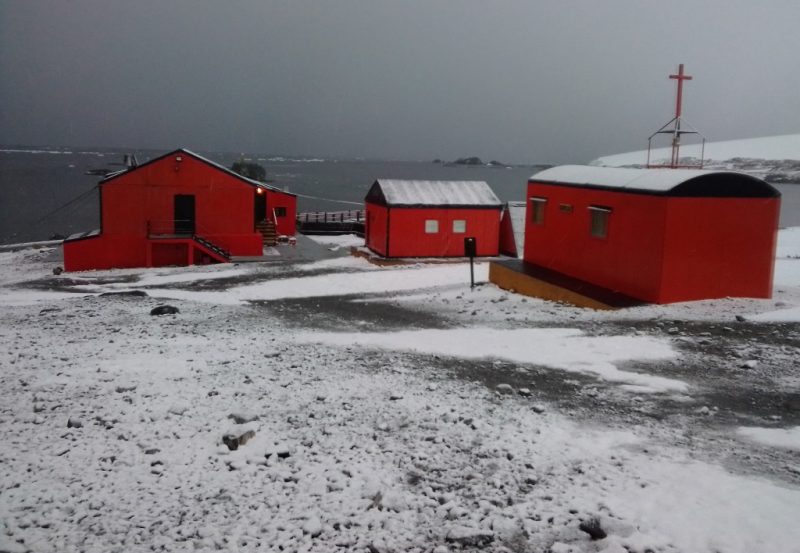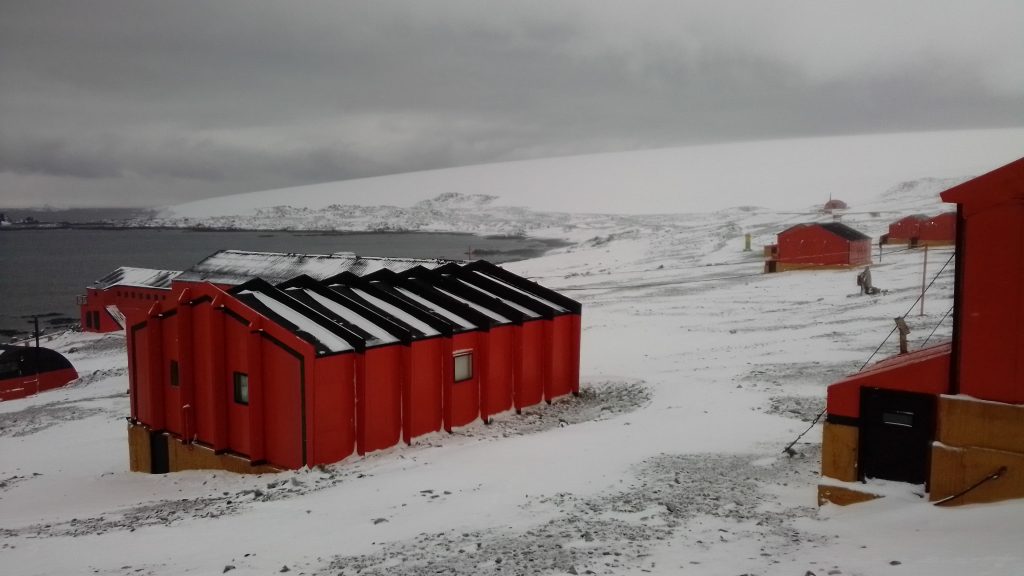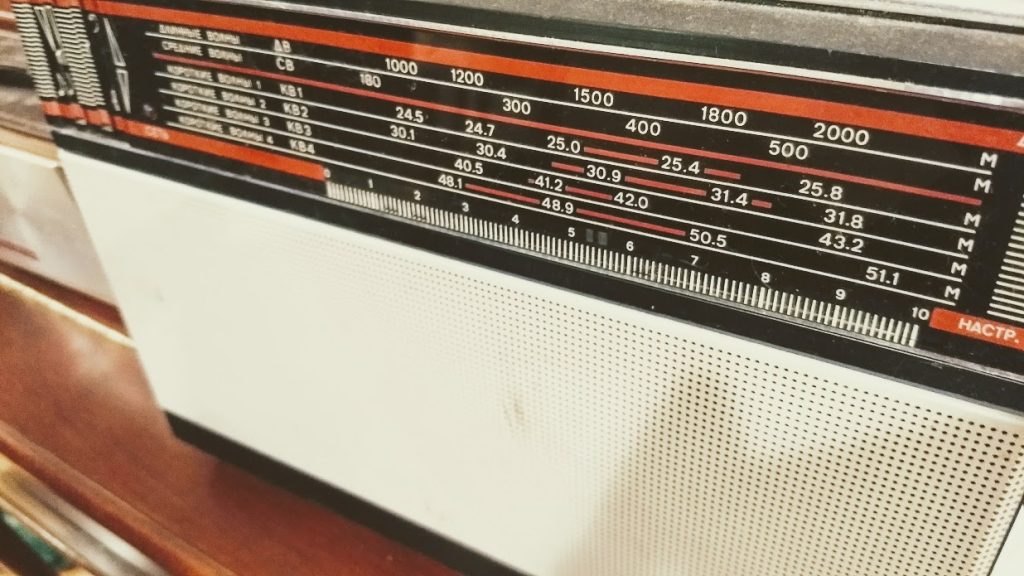
1941: KGEI’s reinforced concrete transmitter building near Belmont. Built to withstand bomb or earthquake. (Source: TheRadioHistorian.org)
Many thanks to SWLing Post contributor, Tracy Wood (K7UO), for sharing the following article from The Daily Journal. Tracy’s notes follow this excerpt:
KGEI, a shortwave radio station in Redwood Shores that was the only voice from home for GIs in the Pacific during World War II, has its call letters back.
The letters on the front of the building located off Radio Road were covered up decades ago by a church that took over the station’s transmitter building, now part of Silicon Valley Clean Water.
“I am happy to report that we have uncovered the letters on the building,” said Teresa Herrera, manager of the wastewater treatment facility. “I think it looks great!”
Herrera said she had no idea of the building’s history until the Rear View Mirror brought it to SVCW’s attention. No extra money was needed for the restoration because the building was due to be painted.
“The letters were just as they were when the concrete forms had been originally removed in the 1930s,” said construction manager William Tanner.
Still, there is no plaque to remind the few visitors to the area that KGEI, the GEI standing for General Electric International, played an important role in World War II. Among other accomplishments, the station broadcast Gen. Douglas MacArthur’s “I have returned” speech that fulfilled his promise to return with victorious American troops to the Philippines, occupied by Japanese forces since 1942.
“The First 24 Hours of War in the Pacific,” a book written by Donald Young, underlines the importance of KGEI. It also reminds readers how successful Japanese forces were during those 24 hours in attacking Malaysia, Hong Kong, the Philippines, Wake Island and Guam, as well as Hawaii.[…]
Read the full article at The Daily Journal.
Tracy also shared the following notes:
During my youth I often listened to KGEI, both in Oregon and Bolivia. I got to visit the station in the 80s. I remember their teletype spewing paper for the long-form newscasts… The old 50kw GE hummed away.
The parasitic oscillations would actually form audio that you could hear in the studio/transmitter room. The 250 kw unit was tucked away… kind of hard to see.
KGEI was an important part of LATAM radio history.. the Cuban Missile Crisis, earthquake outreach to Nicaragua, etc.
Cheap clock radios could receive KGEI in Oregon when the 250kw unit was blasting to Asia.
“Mission Engineering” 250kw beamed to Asia on 5980 could often be heard with Chinese and Russian slow-dictation programming… trying to overcome the Cold War ban of Bibles in the Communist countries.
If you can find a copy of the book “Sky Waves” that has a complete history of FEBC and some more details about “La Voz de la Amistad,” the Voice of Friendship KGEI.
Thank you so much, Tracy, for your notes and insights!
I just found a copy of the 1963 book Sky Waves by Gleason H. Ledyard as a free download via the American Radio History website. Click here to download the PDF.
I imagine other SWLing Post readers remember KGEI as well. If so, please comment!

